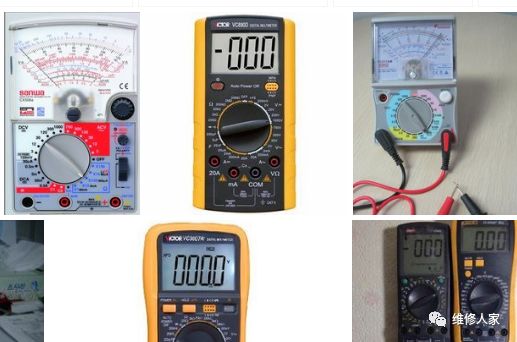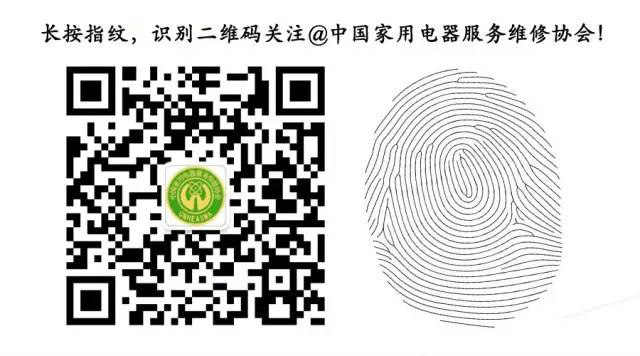
1. Precautions for Using a Multimeter
(1) Before using the multimeter, perform “mechanical zeroing”, which means setting the multimeter pointer to the zero voltage or zero current position when there is no measured electrical quantity.
(2) During the use of the multimeter, do not touch the metal parts of the probes with your hands. This ensures measurement accuracy and also guarantees personal safety.
(3) When measuring a certain electrical quantity, do not change the range while measuring, especially when measuring high voltage or large current. Otherwise, it may damage the multimeter. If a range change is necessary, disconnect the probes first, then change the range before measuring.
(4) The multimeter must be placed horizontally during use to avoid errors. Also, be mindful of external magnetic fields that may affect the multimeter.
(5) After using the multimeter, set the range switch to the maximum AC voltage setting. If it will not be used for a long time, remove the internal battery to prevent corrosion of other components.
2. Using the Ohm Range
1. Select an appropriate range. When measuring resistance with the ohmmeter, choose a suitable range so that the pointer indicates near the middle value. It is best not to use the left third of the scale, as this part has poor resolution.
2. Zeroing is required before use.
3. Do not measure while the circuit is energized.
4. The resistance being measured should not have parallel branches.
5. When measuring the equivalent resistance of polarized components such as transistors or electrolytic capacitors, pay attention to the polarity of the two probes.
6. When measuring the equivalent resistance of nonlinear components with different ohm ranges, the measured resistance values will differ. This is due to the different midpoint resistances and full-scale currents of each range; generally, the smaller the range, the smaller the measured resistance value.
3. Measuring DC with a Multimeter
1. Perform mechanical zeroing.
2. Select an appropriate range setting.
3. When measuring current with the multimeter’s current range, it should be connected in series with the circuit being measured, as only in series can the current flowing through the ammeter be the same as the current in the measured branch. When measuring, disconnect the measured branch and connect the multimeter’s red and black probes between the two disconnected points. Special attention should be paid to ensure the ammeter is not connected in parallel with the measured circuit, as this is dangerous and can easily burn out the multimeter.
4. Pay attention to the polarity of the measured electrical quantity.
5. Use the scale and read correctly.
6. When using the 2.5A DC current range, the red probe should be plugged into the 2.5A measurement socket, and the range switch can be set to any range of the DC current settings.
7. If the measured DC current exceeds 2.5A, the 2.5A range can be expanded to a 5A range. This is simple; the user can connect a 0.24-ohm resistor between the “2.5A” socket and the black probe socket, making this range a 5A current range. The connected 0.24-ohm resistor should be rated for more than 2W; if the power is too low, it may burn out.

Currently, multimeters are divided into analog and digital types, each with its own advantages, making it hard to say which is better. It is best to have one of each type. The three basic functions of a multimeter are measuring resistance, voltage, and current, which is why it is often referred to as a “triple meter” by older generations.
The most notable feature of a multimeter is the range switch, which is used to switch between various functions. Generally, it uses A— to indicate DC current measurement, with milliamp and amp ranges further divided. V- indicates DC voltage measurement, and more advanced multimeters have a millivolt range, also divided into several ranges. V~ is used for measuring AC voltage, and A~ measures AC current.
Exciting Recommendations
Consumer Concerns for “Double 11”
Home Appliance Services Empower “Double 11”, Associations Join Forces with Enterprises to Assist the Last Mile
As “Double Eleven” Approaches, Home Appliance Services Face a Major Test In 2018, Who Will Win the Title of China’s Most Influential On-Site Service Brand?!
China’s Home Appliance Service Industry’s Most Influential “Double 11” Service Brand User Evaluation Activity Has Started!
Have You Buckled Your Seatbelt on the Second Floor? National Safety Production Month Series Report 2
Air Conditioning Installation Safety and Outdoor Work Charges are Major Issues National Safety Production Month Series Report 1
The First China Family Kitchen Appliances and Home Decoration Kitchen Concept and Technology Leaders Summit Successfully Concluded in Wuhan
China’s Home Appliance Service Industry’s National Brand Promotion Plan Has Started!
The Home Appliance Service Industry’s 315 Consumer Rights Protection Innovation Conference Was Held in Beijing
The First Home Appliance Material Supply Annual Conference “Golden Material Conference” Successfully Held, Highlights Recap
Welcome to Submit Articles to Discuss the Development of the Home Appliance Service Industry!
Likes are Encouragement, Share to Spread FriendshipFeelings